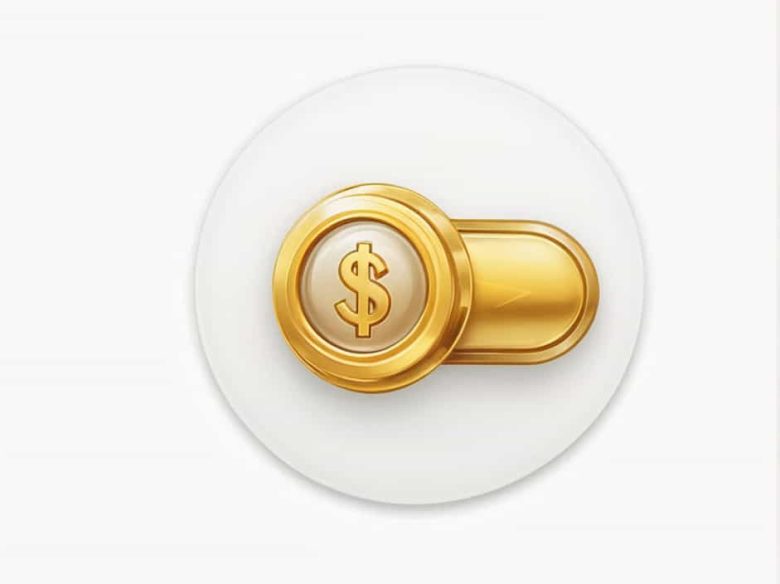Gold has been a symbol of wealth and stability for centuries. Whether you’re an investor a jeweler or simply curious understanding gold prices is essential. The price of gold fluctuates daily due to various factors including market demand economic conditions and geopolitical events.
In this guide we will explore what determines the price of gold how it is measured and what influences its value over time.
How Is the Price of Gold Determined?
The price of gold is determined by the global market where buyers and sellers trade gold in large volumes. It is quoted in U.S. dollars per troy ounce and the rates are updated throughout the day.
1. Spot Price of Gold
The spot price is the current price of gold for immediate delivery. It is influenced by global supply and demand and is used as a benchmark for gold transactions.
2. Futures Price of Gold
Gold futures are contracts to buy or sell gold at a set price on a future date. These contracts affect gold pricing as traders speculate on whether the price will rise or fall.
3. Gold Price per Gram Ounce and Kilogram
- Gold per gram: Common for small transactions and jewelry.
- Gold per ounce: The most widely used measurement.
- Gold per kilogram: Used for large-scale investments.
Factors That Influence the Price of Gold
Several factors impact gold prices including economic conditions market demand and geopolitical events. Below are the most significant influences:
1. Supply and Demand
Gold is a finite resource and its availability affects pricing. When demand is high and supply is low prices rise. Conversely when demand drops prices fall.
2. Inflation and Economic Stability
Gold is considered a hedge against inflation. When inflation rises the value of paper currency decreases leading investors to buy gold which increases its price.
3. Interest Rates
Gold prices often move in the opposite direction of interest rates. When interest rates are low gold becomes more attractive causing its price to rise.
4. Geopolitical Events and Crises
Political instability wars and financial crises increase gold demand. Investors turn to gold as a safe-haven asset during uncertain times.
5. Strength of the U.S. Dollar
Since gold is priced in U.S. dollars a stronger dollar makes gold more expensive for foreign investors decreasing demand. A weaker dollar makes gold more affordable increasing demand and price.
6. Central Bank Reserves
Governments and central banks hold large gold reserves. When they buy gold prices increase. When they sell prices can drop.
How to Check the Current Gold Price
Gold prices fluctuate throughout the day. Here’s how to stay updated:
- Gold Market Websites – Financial news websites provide real-time gold prices.
- Bank and Investment Firms – Many banks update gold prices daily.
- Gold Dealers – Online and physical dealers display gold rates.
- Stock Market Apps – Apps provide live gold price updates.
Gold Price Trends Over the Years
Gold has shown long-term value growth making it a popular investment. Below are historical price trends:
- 1970s: Gold was priced at $35 per ounce before the U.S. left the gold standard.
- 1980s: Prices surged to $850 per ounce due to inflation and economic uncertainty.
- 2000s: The price of gold rose steadily surpassing $1000 per ounce.
- 2011: Gold reached an all-time high of $1900 per ounce during the global financial crisis.
- 2020s: Gold prices exceeded $2000 per ounce driven by the COVID-19 pandemic and economic instability.
Should You Invest in Gold?
Gold is a valuable asset but is it a good investment? Here are the pros and cons:
Pros of Investing in Gold
✔ Hedge Against Inflation – Gold holds its value even when the economy weakens.
✔ Safe-Haven Asset – Gold prices rise during financial and political crises.
✔ Diversification – Helps balance investment portfolios.
Cons of Investing in Gold
✘ No Passive Income – Unlike stocks or bonds gold doesn’t pay dividends or interest.
✘ Price Fluctuations – Gold prices can be volatile.
✘ Storage Costs – Physical gold requires secure storage.
Ways to Invest in Gold
There are multiple ways to invest in gold depending on your financial goals:
1. Physical Gold
- Gold Coins – Popular among collectors and investors.
- Gold Bars – Available in different weights for serious investors.
- Jewelry – Can be worn but usually has added costs.
2. Gold ETFs and Stocks
- Gold ETFs (Exchange-Traded Funds) track the price of gold without needing physical storage.
- Mining Stocks allow investors to profit from gold production.
3. Gold Futures and Options
For experienced traders gold futures and options offer opportunities to profit from price movements.
How to Sell Gold for the Best Price
If you own gold and want to sell it follow these steps to get the best value:
- Check the Current Gold Price – Know the market rate before selling.
- Compare Offers – Get quotes from multiple gold buyers.
- Sell to a Reputable Dealer – Choose certified gold dealers for fair pricing.
- Consider Online Gold Buyers – Some platforms offer high prices for gold.
The price of gold is influenced by economic factors market demand and global events. Whether you are investing in gold or selling it understanding gold pricing trends can help you make informed decisions.
Gold remains one of the most reliable assets offering financial security and long-term value. Keeping track of gold prices and knowing when to buy or sell can maximize your investment potential.
